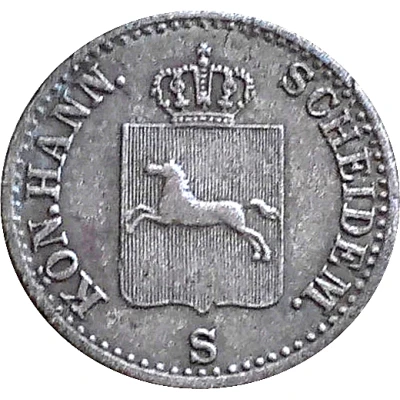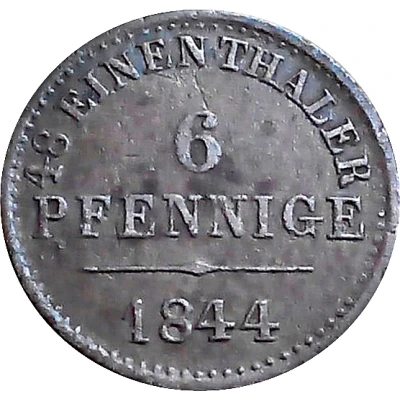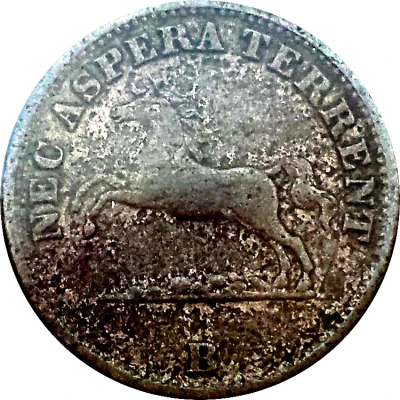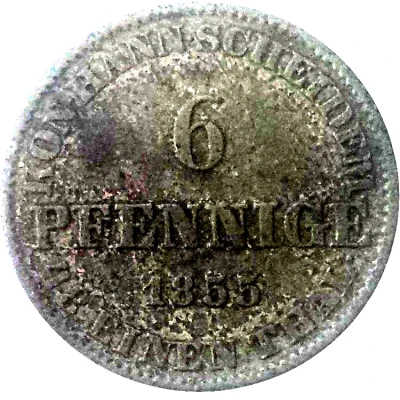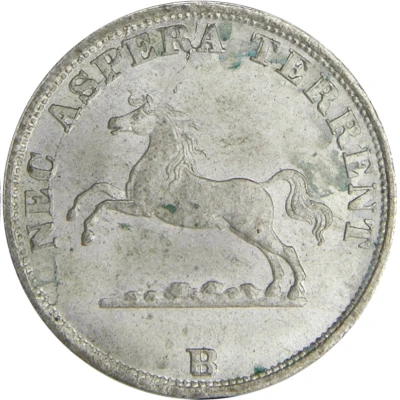
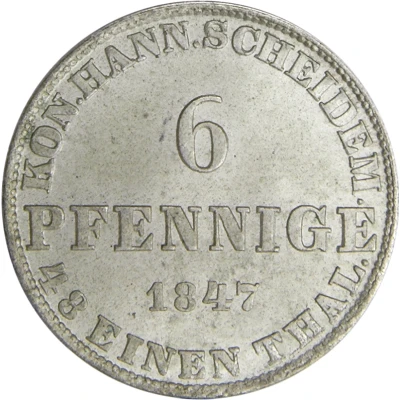

© Ulmo
6 Pfennige - Ernest August
| Billon (.218 silver) | 1.39 g | 16 mm |
| Issuer | Kingdom of Hannover (German States) |
|---|---|
| King | Ernest Augustus I (Ernst August I) (1837-1851) |
| Type | Standard circulation coin |
| Years | 1846-1851 |
| Value | 6 Pfennigs (6 Pfennige) (1⁄48) |
| Currency | Thaler (1814-1866) |
| Composition | Billon (.218 silver) |
| Weight | 1.39 g |
| Diameter | 16 mm |
| Thickness | 1.1 mm |
| Shape | Round |
| Technique | Milled |
| Orientation | Medal alignment ↑↑ |
| Demonetized | Yes |
| Updated | 2024-10-05 |
| Numista | N#30409 |
|---|---|
| Rarity index | 54% |
Reverse
Value, year
Script: Latin
Lettering:
KÖN. HANN. SCHEIDEM.
48 EINEN THALER
6
PFENNIGE
1847
Edge
Plain
Interesting fact
One interesting fact about the 6 Pfennige coin from the Kingdom of Hannover is that it was minted during a time of economic and political change in Germany. The coin was introduced in 1846, just a few years before the German Revolutions of 1848, which aimed to create a unified German state. Additionally, the coin was minted during the reign of Ernest August, who was the King of Hanover from 1837 until his death in 1851. This time period saw significant changes in the German states, including the abolition of feudalism and the rise of industrialization, which had a significant impact on the economy and society. Despite these changes, the 6 Pfennige coin remained a widely used denomination in the Kingdom of Hanover and other German states until the late 19th century.
